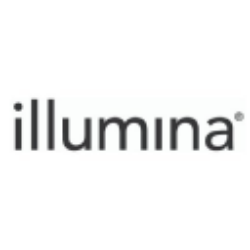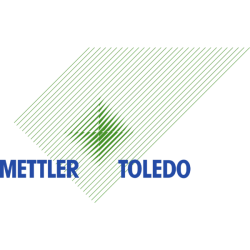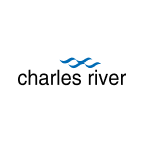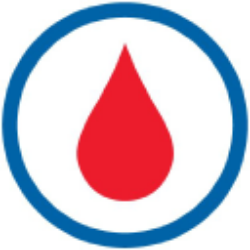DHR

Danaher Corporation
DHR
(2.8)239,05 USD
23.09% ROA
7.48% ROE
47.17x PER
194.138.076.530,00 USD
36.5% DER
0.49% Yield
19.43% NPM
Danaher Corporation Stock Analysis
Danaher Corporation Fundamental Analysis
Fundamental analysis in stock investing is like studying the foundation of a house before buying it. It involves looking at a company's financial health, like its earnings, assets, and debts, to determine if it's a good investment based on its fundamental strength and potential for growth.
| # | Analysis | Rating |
|---|---|---|
| 1 |
ROA
The stock's ability to make a lot of money from its assets shows that it is very profitable, making it a good choice for people who want to invest and make a lot of money. |
|
| 2 |
DER
The stock has a low debt to equity ratio (42%), which means it has a small amount of debt compared to the ownership it holds |
|
| 3 |
Assets Growth
This company's revenue has experienced steady growth over the last five years, indicating a reliable and prosperous financial trajectory. |
|
| 4 |
Dividend
The company's consistent dividend distribution over the past five years reflects its dedication to providing shareholders with steady returns, making it an appealing choice for investors seeking income stability. |
|
| 5 |
ROE
ROE in an average range (11.51%) suggests satisfactory profitability and decent utilization of shareholders' equity. |
|
| 6 |
PBV
The stock's PBV ratio (2.93x) reflects a fair valuation, making it an attractive option for investors seeking balanced opportunities. |
|
| 7 |
Buffet Intrinsic Value
The company's stock shows potential as it is undervalued (1.224) according to Warren Buffett's formula, indicating that its intrinsic value exceeds the market price. |
|
| 8 |
Revenue Growth
Regrettably, this company's revenue has shown no signs of growth over the past three years, suggesting limited potential for returns and making it a less appealing choice. |
|
| 9 |
Net Profit Growth
The net profit of this company has shown no signs of growth over the last five years, suggesting limited profitability and making it a less attractive investment opportunity. |
|
| 10 |
Graham Number
Based on the Graham number, this company's stock price appears to be higher than its intrinsic value, signaling a potentially unfavorable investment choice. |
|
| 11 |
Dividend Growth
The company's dividend growth has remained flat for the past three years, offering no indication of improved returns and making it a less advantageous investment opportunity. |
Danaher Corporation Technical Analysis
Technical analysis in stock investing is like reading the patterns on a weather map to predict future weather conditions. It involves studying past stock price movements and trading volumes to make predictions about where a stock's price might go next, without necessarily looking at the company's financial health.
| # | Analysis | Recommendation |
|---|---|---|
| 1 | Awesome Oscillator | Buy |
| 2 | MACD | Buy |
| 3 | RSI | Hold |
| 4 | Stoch RSI | Sell |
Danaher Corporation Price Chart
Financial Statements
Financial statements are like report cards for companies. They show how much money a company makes (income statement), what it owns and owes (balance sheet), and where it spends its money (cash flow statement), helping stock investors understand if a company is healthy and worth investing in.
Income Statements
An income statement for a company is like a scoreboard for its profits and losses. It shows how much money the company made (revenue) and how much it spent to make that money (expenses), helping stock investors see if a company is making a profit or not.
Revenue in stock investing is the total amount of money a company earns from its sales, and it's a key factor that investors consider to assess a company's financial performance and growth potential.
| Year | Revenue | Growth |
|---|---|---|
| 1985 | 298.000.000 | |
| 1986 | 446.000.000 | 33.18% |
| 1987 | 615.000.000 | 27.48% |
| 1988 | 714.600.000 | 13.94% |
| 1989 | 749.100.000 | 4.61% |
| 1990 | 840.000.000 | 10.82% |
| 1991 | 831.600.000 | -1.01% |
| 1992 | 949.000.000 | 12.37% |
| 1993 | 1.067.100.000 | 11.07% |
| 1994 | 1.288.700.000 | 17.2% |
| 1995 | 1.486.800.000 | 13.32% |
| 1996 | 1.811.900.000 | 17.94% |
| 1997 | 2.051.000.000 | 11.66% |
| 1998 | 2.910.000.000 | 29.52% |
| 1999 | 3.197.200.000 | 8.98% |
| 2000 | 3.777.777.000 | 15.37% |
| 2001 | 3.782.444.000 | 0.12% |
| 2002 | 4.577.232.000 | 17.36% |
| 2003 | 5.293.876.000 | 13.54% |
| 2004 | 6.889.301.000 | 23.16% |
| 2005 | 7.984.704.000 | 13.72% |
| 2006 | 9.596.404.000 | 16.79% |
| 2007 | 11.025.917.000 | 12.97% |
| 2008 | 12.697.456.000 | 13.16% |
| 2009 | 11.184.938.000 | -13.52% |
| 2010 | 13.202.602.000 | 15.28% |
| 2011 | 16.090.540.000 | 17.95% |
| 2012 | 18.260.400.000 | 11.88% |
| 2013 | 19.118.000.000 | 4.49% |
| 2014 | 19.913.800.000 | 4% |
| 2015 | 20.563.100.000 | 3.16% |
| 2016 | 16.882.400.000 | -21.8% |
| 2017 | 18.329.700.000 | 7.9% |
| 2018 | 19.893.000.000 | 7.86% |
| 2019 | 17.911.100.000 | -11.07% |
| 2020 | 22.284.000.000 | 19.62% |
| 2021 | 29.453.000.000 | 24.34% |
| 2022 | 31.471.000.000 | 6.41% |
| 2023 | 27.492.000.000 | -14.47% |
| 2023 | 23.890.000.000 | -15.08% |
| 2024 | 22.972.000.000 | -4% |
Research and Development Expenses are the costs a company incurs to create and improve its products or services, which can be important for investors to evaluate a company's innovation and potential for future growth.
| Year | Research and Development Expenses | Growth |
|---|---|---|
| 1985 | 0 | |
| 1986 | 0 | 0% |
| 1987 | 0 | 0% |
| 1988 | 0 | 0% |
| 1989 | 0 | 0% |
| 1990 | 0 | 0% |
| 1991 | 0 | 0% |
| 1992 | 0 | 0% |
| 1993 | 0 | 0% |
| 1994 | 0 | 0% |
| 1995 | 0 | 0% |
| 1996 | 0 | 0% |
| 1997 | 0 | 0% |
| 1998 | 0 | 0% |
| 1999 | 0 | 0% |
| 2000 | 0 | 0% |
| 2001 | 0 | 0% |
| 2002 | 0 | 0% |
| 2003 | 0 | 0% |
| 2004 | 0 | 0% |
| 2005 | 0 | 0% |
| 2006 | 0 | 0% |
| 2007 | 601.424.000 | 100% |
| 2008 | 725.443.000 | 17.1% |
| 2009 | 632.651.000 | -14.67% |
| 2010 | 809.481.000 | 21.84% |
| 2011 | 1.018.526.000 | 20.52% |
| 2012 | 1.137.900.000 | 10.49% |
| 2013 | 1.249.900.000 | 8.96% |
| 2014 | 1.314.200.000 | 4.89% |
| 2015 | 1.239.100.000 | -6.06% |
| 2016 | 975.100.000 | -27.07% |
| 2017 | 1.128.800.000 | 13.62% |
| 2018 | 1.231.200.000 | 8.32% |
| 2019 | 1.126.000.000 | -9.34% |
| 2020 | 1.348.000.000 | 16.47% |
| 2021 | 1.742.000.000 | 22.62% |
| 2022 | 1.745.000.000 | 0.17% |
| 2023 | 1.668.000.000 | -4.62% |
| 2023 | 1.503.000.000 | -10.98% |
| 2024 | 1.564.000.000 | 3.9% |
General and Administrative Expenses are the costs a company incurs to run its day-to-day operations, such as office rent, salaries, and utilities, which investors consider to understand a company's overall efficiency and management effectiveness.
| Year | General and Administrative Expenses | Growth |
|---|---|---|
| 1985 | 0 | |
| 1986 | 0 | 0% |
| 1987 | 0 | 0% |
| 1988 | 0 | 0% |
| 1989 | 0 | 0% |
| 1990 | 0 | 0% |
| 1991 | 0 | 0% |
| 1992 | 0 | 0% |
| 1993 | 0 | 0% |
| 1994 | 0 | 0% |
| 1995 | 0 | 0% |
| 1996 | 0 | 0% |
| 1997 | 0 | 0% |
| 1998 | 0 | 0% |
| 1999 | 0 | 0% |
| 2000 | 0 | 0% |
| 2001 | 0 | 0% |
| 2002 | 0 | 0% |
| 2003 | 0 | 0% |
| 2004 | 0 | 0% |
| 2005 | 0 | 0% |
| 2006 | 0 | 0% |
| 2007 | 0 | 0% |
| 2008 | 0 | 0% |
| 2009 | 0 | 0% |
| 2010 | 0 | 0% |
| 2011 | 0 | 0% |
| 2012 | 0 | 0% |
| 2013 | 0 | 0% |
| 2014 | 0 | 0% |
| 2015 | 0 | 0% |
| 2016 | 0 | 0% |
| 2017 | 0 | 0% |
| 2018 | 0 | 0% |
| 2019 | 0 | 0% |
| 2020 | 0 | 0% |
| 2021 | 0 | 0% |
| 2022 | 0 | 0% |
| 2023 | 0 | 0% |
| 2023 | 0 | 0% |
| 2024 | 0 | 0% |
EBITDA stands for Earnings Before Interest, Taxes, Depreciation, and Amortization. It is a measure that helps stock investors analyze a company's profitability by looking at its earnings without considering certain expenses. This helps to get a clearer picture of the company's financial performance and its ability to generate cash flow.
| Year | EBITDA | Growth |
|---|---|---|
| 1985 | 26.700.000 | |
| 1986 | 42.300.000 | 36.88% |
| 1987 | 98.000.000 | 56.84% |
| 1988 | 122.200.000 | 19.8% |
| 1989 | 113.100.000 | -8.05% |
| 1990 | 101.200.000 | -11.76% |
| 1991 | 68.100.000 | -48.6% |
| 1992 | 98.100.000 | 30.58% |
| 1993 | 133.900.000 | 26.74% |
| 1994 | 190.500.000 | 29.71% |
| 1995 | 238.800.000 | 20.23% |
| 1996 | 294.800.000 | 19% |
| 1997 | 343.000.000 | 14.05% |
| 1998 | 498.700.000 | 31.22% |
| 1999 | 584.400.000 | 14.66% |
| 2000 | 701.870.000 | 16.74% |
| 2001 | 750.127.000 | 6.43% |
| 2002 | 824.414.000 | 9.01% |
| 2003 | 979.431.000 | 15.83% |
| 2004 | 1.261.261.000 | 22.35% |
| 2005 | 1.456.347.000 | 13.4% |
| 2006 | 1.743.191.000 | 16.46% |
| 2007 | 2.015.293.000 | 13.5% |
| 2008 | 2.218.768.000 | 9.17% |
| 2009 | 1.889.097.000 | -17.45% |
| 2010 | 2.860.562.000 | 33.96% |
| 2011 | 3.224.420.000 | 11.28% |
| 2012 | 4.008.100.000 | 19.55% |
| 2013 | 4.606.900.000 | 13% |
| 2014 | 4.543.000.000 | -1.41% |
| 2015 | 3.207.500.000 | -41.64% |
| 2016 | 4.031.700.000 | 20.44% |
| 2017 | 4.339.800.000 | 7.1% |
| 2018 | 4.276.500.000 | -1.48% |
| 2019 | 4.603.400.000 | 7.1% |
| 2020 | 6.590.000.000 | 30.15% |
| 2021 | 10.007.000.000 | 34.15% |
| 2022 | 9.712.000.000 | -3.04% |
| 2023 | 8.288.000.000 | -17.18% |
| 2023 | 7.499.000.000 | -10.52% |
| 2024 | 6.992.000.000 | -7.25% |
Gross profit is the money a company makes from selling its products or services after subtracting the cost of producing or providing them, and it is an important measure for investors to understand a company's profitability.
| Year | Gross Profit | Growth |
|---|---|---|
| 1985 | 58.300.000 | |
| 1986 | 103.600.000 | 43.73% |
| 1987 | 208.600.000 | 50.34% |
| 1988 | 252.600.000 | 17.42% |
| 1989 | 250.000.000 | -1.04% |
| 1990 | 266.700.000 | 6.26% |
| 1991 | 229.700.000 | -16.11% |
| 1992 | 278.700.000 | 17.58% |
| 1993 | 314.100.000 | 11.27% |
| 1994 | 399.000.000 | 21.28% |
| 1995 | 505.700.000 | 21.1% |
| 1996 | 640.700.000 | 21.07% |
| 1997 | 744.600.000 | 13.95% |
| 1998 | 1.197.600.000 | 37.83% |
| 1999 | 1.362.800.000 | 12.12% |
| 2000 | 1.611.767.000 | 15.45% |
| 2001 | 1.444.417.000 | -11.59% |
| 2002 | 1.786.057.000 | 19.13% |
| 2003 | 2.139.067.000 | 16.5% |
| 2004 | 2.892.665.000 | 26.05% |
| 2005 | 3.445.015.000 | 16.03% |
| 2006 | 4.243.383.000 | 18.81% |
| 2007 | 5.040.895.000 | 15.82% |
| 2008 | 5.940.194.000 | 15.14% |
| 2009 | 5.280.220.000 | -12.5% |
| 2010 | 6.626.790.000 | 20.32% |
| 2011 | 8.176.664.000 | 18.95% |
| 2012 | 9.414.300.000 | 13.15% |
| 2013 | 9.957.600.000 | 5.46% |
| 2014 | 10.442.500.000 | 4.64% |
| 2015 | 10.762.500.000 | 2.97% |
| 2016 | 9.334.600.000 | -15.3% |
| 2017 | 10.192.500.000 | 8.42% |
| 2018 | 11.107.100.000 | 8.23% |
| 2019 | 9.983.700.000 | -11.25% |
| 2020 | 12.475.000.000 | 19.97% |
| 2021 | 17.952.000.000 | 30.51% |
| 2022 | 18.949.000.000 | 5.26% |
| 2023 | 16.000.000.000 | -18.43% |
| 2023 | 14.034.000.000 | -14.01% |
| 2024 | 13.712.000.000 | -2.35% |
Net income in stock investing is like the money a company actually gets to keep as profit after paying all its bills, and it's an important measure to understand how well a company is doing financially.
| Year | Net Profit | Growth |
|---|---|---|
| 1985 | 5.600.000 | |
| 1986 | 8.700.000 | 35.63% |
| 1987 | 20.100.000 | 56.72% |
| 1988 | 39.000.000 | 48.46% |
| 1989 | 61.100.000 | 36.17% |
| 1990 | 35.700.000 | -71.15% |
| 1991 | 13.300.000 | -168.42% |
| 1992 | 31.600.000 | 57.91% |
| 1993 | 17.700.000 | -78.53% |
| 1994 | 81.700.000 | 78.34% |
| 1995 | 108.400.000 | 24.63% |
| 1996 | 207.800.000 | 47.83% |
| 1997 | 154.800.000 | -34.24% |
| 1998 | 182.900.000 | 15.36% |
| 1999 | 261.600.000 | 30.08% |
| 2000 | 324.213.000 | 19.31% |
| 2001 | 297.665.000 | -8.92% |
| 2002 | 290.391.000 | -2.5% |
| 2003 | 536.834.000 | 45.91% |
| 2004 | 746.000.000 | 28.04% |
| 2005 | 897.800.000 | 16.91% |
| 2006 | 1.122.029.000 | 19.98% |
| 2007 | 1.369.904.000 | 18.09% |
| 2008 | 1.317.631.000 | -3.97% |
| 2009 | 1.151.704.000 | -14.41% |
| 2010 | 1.793.000.000 | 35.77% |
| 2011 | 2.172.264.000 | 17.46% |
| 2012 | 2.392.200.000 | 9.19% |
| 2013 | 2.695.000.000 | 11.24% |
| 2014 | 2.598.400.000 | -3.72% |
| 2015 | 3.357.400.000 | 22.61% |
| 2016 | 2.553.700.000 | -31.47% |
| 2017 | 2.492.100.000 | -2.47% |
| 2018 | 2.650.900.000 | 5.99% |
| 2019 | 3.008.200.000 | 11.88% |
| 2020 | 3.646.000.000 | 17.49% |
| 2021 | 6.433.000.000 | 43.32% |
| 2022 | 7.209.000.000 | 10.76% |
| 2023 | 4.516.000.000 | -59.63% |
| 2023 | 4.764.000.000 | 5.21% |
| 2024 | 3.628.000.000 | -31.31% |
EPS, or earnings per share, is a measure that shows how much profit a company has earned for each outstanding share of its stock, and it is important for stock investors as it helps understand the profitability of a company and compare it with other companies in the market.
| Year | Earning per Share (EPS) | Growth |
|---|---|---|
| 1985 | 0 | |
| 1986 | 0 | 0% |
| 1987 | 0 | 0% |
| 1988 | 0 | 0% |
| 1989 | 0 | 0% |
| 1990 | 0 | 0% |
| 1991 | 0 | 0% |
| 1992 | 0 | 0% |
| 1993 | 0 | 0% |
| 1994 | 0 | 0% |
| 1995 | 0 | 0% |
| 1996 | 0 | 0% |
| 1997 | 0 | 0% |
| 1998 | 0 | 0% |
| 1999 | 0 | 0% |
| 2000 | 1 | 0% |
| 2001 | 1 | 0% |
| 2002 | 0 | 0% |
| 2003 | 1 | 0% |
| 2004 | 1 | 100% |
| 2005 | 1 | 0% |
| 2006 | 2 | 0% |
| 2007 | 2 | 50% |
| 2008 | 2 | 0% |
| 2009 | 2 | -100% |
| 2010 | 3 | 50% |
| 2011 | 3 | 33.33% |
| 2012 | 3 | 0% |
| 2013 | 4 | 0% |
| 2014 | 4 | 0% |
| 2015 | 5 | 25% |
| 2016 | 4 | -33.33% |
| 2017 | 4 | 0% |
| 2018 | 4 | 0% |
| 2019 | 3 | 0% |
| 2020 | 5 | 25% |
| 2021 | 9 | 50% |
| 2022 | 10 | 11.11% |
| 2023 | 6 | -50% |
| 2023 | 6 | 0% |
| 2024 | 5 | -50% |
Cashflow Statements
Cashflow statements show the movement of money in and out of a company, helping stock investors understand how much money a company makes and spends. By examining cashflow statements, investors can assess if a company is generating enough cash to pay its bills, invest in growth, and provide returns to stockholders.
Free cash flow is the leftover cash that a company generates after covering its operating expenses and capital expenditures, which is important for stock investors as it shows how much money a company has available to invest in growth, pay dividends, or reduce debt.
| Year | Free Cashflow | Growth |
|---|---|---|
| 1990 | 37.000.000 | |
| 1991 | 0 | 0% |
| 1992 | 39.000.000 | 100% |
| 1993 | 95.500.000 | 59.16% |
| 1994 | 89.900.000 | -6.23% |
| 1995 | 115.000.000 | 21.83% |
| 1996 | 165.800.000 | 30.64% |
| 1997 | 215.600.000 | 23.1% |
| 1998 | -284.700.000 | 175.73% |
| 1999 | 265.400.000 | 207.27% |
| 2000 | 423.742.000 | 37.37% |
| 2001 | 527.886.000 | 19.73% |
| 2002 | 644.917.000 | 18.15% |
| 2003 | 781.201.000 | 17.45% |
| 2004 | 917.310.000 | 14.84% |
| 2005 | 1.082.595.000 | 15.27% |
| 2006 | 1.409.545.000 | 23.2% |
| 2007 | 1.483.704.000 | 5% |
| 2008 | 1.665.246.000 | 10.9% |
| 2009 | 1.612.287.000 | -3.28% |
| 2010 | 1.867.023.000 | 13.64% |
| 2011 | 2.291.796.000 | 18.53% |
| 2012 | 2.956.700.000 | 22.49% |
| 2013 | 3.047.200.000 | 2.97% |
| 2014 | 3.293.000.000 | 7.46% |
| 2015 | 3.288.900.000 | -0.12% |
| 2016 | 2.932.200.000 | -12.16% |
| 2017 | 2.907.100.000 | -0.86% |
| 2018 | 3.438.000.000 | 15.44% |
| 2019 | 3.316.100.000 | -3.68% |
| 2020 | 5.417.000.000 | 38.78% |
| 2021 | 7.064.000.000 | 23.32% |
| 2022 | 7.367.000.000 | 4.11% |
| 2023 | 5.781.000.000 | -27.43% |
| 2023 | 1.307.000.000 | -342.31% |
| 2024 | 1.130.000.000 | -15.66% |
Operating cash flow represents the cash generated or consumed by a company's day-to-day operations, excluding external investing or financing activities, and is crucial for stock investors as it shows how much cash a company is generating from its core business operations.
| Year | Operating Cashflow | Growth |
|---|---|---|
| 1990 | 70.000.000 | |
| 1991 | 41.800.000 | -67.46% |
| 1992 | 72.900.000 | 42.66% |
| 1993 | 135.800.000 | 46.32% |
| 1994 | 144.400.000 | 5.96% |
| 1995 | 174.200.000 | 17.11% |
| 1996 | 217.100.000 | 19.76% |
| 1997 | 278.400.000 | 22.02% |
| 1998 | 331.300.000 | 15.97% |
| 1999 | 419.100.000 | 20.95% |
| 2000 | 512.245.000 | 18.18% |
| 2001 | 608.471.000 | 15.81% |
| 2002 | 710.347.000 | 14.34% |
| 2003 | 861.544.000 | 17.55% |
| 2004 | 1.033.216.000 | 16.62% |
| 2005 | 1.203.801.000 | 14.17% |
| 2006 | 1.547.251.000 | 22.2% |
| 2007 | 1.645.775.000 | 5.99% |
| 2008 | 1.859.029.000 | 11.47% |
| 2009 | 1.800.834.000 | -3.23% |
| 2010 | 2.084.351.000 | 13.6% |
| 2011 | 2.626.267.000 | 20.63% |
| 2012 | 3.415.000.000 | 23.1% |
| 2013 | 3.585.300.000 | 4.75% |
| 2014 | 3.758.400.000 | 4.61% |
| 2015 | 3.801.800.000 | 1.14% |
| 2016 | 3.521.800.000 | -7.95% |
| 2017 | 3.477.800.000 | -1.27% |
| 2018 | 4.022.000.000 | 13.53% |
| 2019 | 3.951.600.000 | -1.78% |
| 2020 | 6.208.000.000 | 36.35% |
| 2021 | 8.358.000.000 | 25.72% |
| 2022 | 8.519.000.000 | 1.89% |
| 2023 | 7.164.000.000 | -18.91% |
| 2023 | 1.672.000.000 | -328.47% |
| 2024 | 1.417.000.000 | -18% |
Capex, short for capital expenditures, refers to the money a company spends on acquiring or upgrading tangible assets like buildings, equipment, or technology, which is important for stock investors as it indicates how much a company is investing in its infrastructure to support future growth and profitability.
| Year | Capital Expenditure | Growth |
|---|---|---|
| 1990 | 33.000.000 | |
| 1991 | 41.800.000 | 21.05% |
| 1992 | 33.900.000 | -23.3% |
| 1993 | 40.300.000 | 15.88% |
| 1994 | 54.500.000 | 26.06% |
| 1995 | 59.200.000 | 7.94% |
| 1996 | 51.300.000 | -15.4% |
| 1997 | 62.800.000 | 18.31% |
| 1998 | 616.000.000 | 89.81% |
| 1999 | 153.700.000 | -300.78% |
| 2000 | 88.503.000 | -73.67% |
| 2001 | 80.585.000 | -9.83% |
| 2002 | 65.430.000 | -23.16% |
| 2003 | 80.343.000 | 18.56% |
| 2004 | 115.906.000 | 30.68% |
| 2005 | 121.206.000 | 4.37% |
| 2006 | 137.706.000 | 11.98% |
| 2007 | 162.071.000 | 15.03% |
| 2008 | 193.783.000 | 16.36% |
| 2009 | 188.547.000 | -2.78% |
| 2010 | 217.328.000 | 13.24% |
| 2011 | 334.471.000 | 35.02% |
| 2012 | 458.300.000 | 27.02% |
| 2013 | 538.100.000 | 14.83% |
| 2014 | 465.400.000 | -15.62% |
| 2015 | 512.900.000 | 9.26% |
| 2016 | 589.600.000 | 13.01% |
| 2017 | 570.700.000 | -3.31% |
| 2018 | 584.000.000 | 2.28% |
| 2019 | 635.500.000 | 8.1% |
| 2020 | 791.000.000 | 19.66% |
| 2021 | 1.294.000.000 | 38.87% |
| 2022 | 1.152.000.000 | -12.33% |
| 2023 | 1.383.000.000 | 16.7% |
| 2023 | 365.000.000 | -278.9% |
| 2024 | 287.000.000 | -27.18% |
Balance Sheet
Balance sheets provide a snapshot of a company's financial health and its assets (such as cash, inventory, and property) and liabilities (like debts and obligations) at a specific point in time. For stock investors, balance sheets help assess the company's overall worth and evaluate its ability to meet financial obligations and support future growth.
Equity refers to the ownership interest or stake that shareholders have in a company, representing their claim on its assets and earnings after all debts and liabilities are paid.
| Year | Equity | Growth |
|---|---|---|
| 1985 | 49.900.000 | |
| 1986 | 65.200.000 | 23.47% |
| 1987 | 103.300.000 | 36.88% |
| 1988 | 155.700.000 | 33.65% |
| 1989 | 191.700.000 | 18.78% |
| 1990 | 305.000.000 | 37.15% |
| 1991 | 319.300.000 | 4.48% |
| 1992 | 348.400.000 | 8.35% |
| 1993 | 363.700.000 | 4.21% |
| 1994 | 476.100.000 | 23.61% |
| 1995 | 586.300.000 | 18.8% |
| 1996 | 800.300.000 | 26.74% |
| 1997 | 916.900.000 | 12.72% |
| 1998 | 1.351.800.000 | 32.17% |
| 1999 | 1.708.800.000 | 20.89% |
| 2000 | 1.942.333.000 | 12.02% |
| 2001 | 2.228.586.000 | 12.84% |
| 2002 | 3.009.599.000 | 25.95% |
| 2003 | 3.646.709.000 | 17.47% |
| 2004 | 4.619.682.000 | 21.06% |
| 2005 | 5.080.350.000 | 9.07% |
| 2006 | 6.644.660.000 | 23.54% |
| 2007 | 9.085.688.000 | 26.87% |
| 2008 | 9.808.562.000 | 7.37% |
| 2009 | 11.630.176.000 | 15.66% |
| 2010 | 13.772.766.000 | 15.56% |
| 2011 | 16.971.768.000 | 18.85% |
| 2012 | 19.083.900.000 | 11.07% |
| 2013 | 22.451.400.000 | 15% |
| 2014 | 23.449.800.000 | 4.26% |
| 2015 | 23.764.000.000 | 1.32% |
| 2016 | 23.076.800.000 | -2.98% |
| 2017 | 26.367.800.000 | 12.48% |
| 2018 | 28.226.700.000 | 6.59% |
| 2019 | 30.281.900.000 | 6.79% |
| 2020 | 39.777.000.000 | 23.87% |
| 2021 | 45.177.000.000 | 11.95% |
| 2022 | 50.090.000.000 | 9.81% |
| 2023 | 52.415.000.000 | 4.44% |
| 2023 | 53.490.000.000 | 2.01% |
| 2024 | 49.902.000.000 | -7.19% |
Assets represent the valuable resources that a company owns, such as cash, inventory, property, and equipment, and understanding a company's assets helps investors assess its value and potential for generating future profits.
| Year | Assets | Growth |
|---|---|---|
| 1985 | 268.900.000 | |
| 1986 | 740.700.000 | 63.7% |
| 1987 | 655.300.000 | -13.03% |
| 1988 | 575.800.000 | -13.81% |
| 1989 | 507.200.000 | -13.53% |
| 1990 | 744.500.000 | 31.87% |
| 1991 | 735.000.000 | -1.29% |
| 1992 | 769.800.000 | 4.52% |
| 1993 | 872.500.000 | 11.77% |
| 1994 | 1.134.900.000 | 23.12% |
| 1995 | 1.486.000.000 | 23.63% |
| 1996 | 1.765.100.000 | 15.81% |
| 1997 | 1.879.700.000 | 6.1% |
| 1998 | 2.738.700.000 | 31.37% |
| 1999 | 3.047.100.000 | 10.12% |
| 2000 | 4.031.679.000 | 24.42% |
| 2001 | 4.820.483.000 | 16.36% |
| 2002 | 6.029.145.000 | 20.05% |
| 2003 | 6.890.050.000 | 12.49% |
| 2004 | 8.493.893.000 | 18.88% |
| 2005 | 9.163.109.000 | 7.3% |
| 2006 | 12.864.151.000 | 28.77% |
| 2007 | 17.471.935.000 | 26.37% |
| 2008 | 17.458.032.000 | -0.08% |
| 2009 | 19.595.420.000 | 10.91% |
| 2010 | 22.217.130.000 | 11.8% |
| 2011 | 29.949.447.000 | 25.82% |
| 2012 | 32.941.000.000 | 9.08% |
| 2013 | 34.672.200.000 | 4.99% |
| 2014 | 36.991.700.000 | 6.27% |
| 2015 | 48.222.200.000 | 23.29% |
| 2016 | 45.295.300.000 | -6.46% |
| 2017 | 46.648.600.000 | 2.9% |
| 2018 | 47.832.500.000 | 2.48% |
| 2019 | 62.081.600.000 | 22.95% |
| 2020 | 76.161.000.000 | 18.49% |
| 2021 | 83.184.000.000 | 8.44% |
| 2022 | 84.350.000.000 | 1.38% |
| 2023 | 87.734.000.000 | 3.86% |
| 2023 | 84.488.000.000 | -3.84% |
| 2024 | 78.555.000.000 | -7.55% |
Liabilities refer to the financial obligations or debts that a company owes to creditors or external parties, and understanding a company's liabilities is important for investors as it helps assess the company's financial risk and ability to meet its obligations.
| Year | Liabilities | Growth |
|---|---|---|
| 1985 | 219.000.000 | |
| 1986 | 675.500.000 | 67.58% |
| 1987 | 552.000.000 | -22.37% |
| 1988 | 420.100.000 | -31.4% |
| 1989 | 315.500.000 | -33.15% |
| 1990 | 439.500.000 | 28.21% |
| 1991 | 415.700.000 | -5.73% |
| 1992 | 421.400.000 | 1.35% |
| 1993 | 508.800.000 | 17.18% |
| 1994 | 658.800.000 | 22.77% |
| 1995 | 899.700.000 | 26.78% |
| 1996 | 964.800.000 | 6.75% |
| 1997 | 962.800.000 | -0.21% |
| 1998 | 1.386.900.000 | 30.58% |
| 1999 | 1.338.300.000 | -3.63% |
| 2000 | 2.089.346.000 | 35.95% |
| 2001 | 2.591.897.000 | 19.39% |
| 2002 | 3.019.546.000 | 14.16% |
| 2003 | 3.243.341.000 | 6.9% |
| 2004 | 3.874.211.000 | 16.28% |
| 2005 | 4.082.759.000 | 5.11% |
| 2006 | 6.219.491.000 | 34.36% |
| 2007 | 8.386.247.000 | 25.84% |
| 2008 | 7.649.470.000 | -9.63% |
| 2009 | 7.965.244.000 | 3.96% |
| 2010 | 8.444.364.000 | 5.67% |
| 2011 | 12.977.679.000 | 34.93% |
| 2012 | 13.857.100.000 | 6.35% |
| 2013 | 12.220.800.000 | -13.39% |
| 2014 | 13.541.900.000 | 9.76% |
| 2015 | 24.458.200.000 | 44.63% |
| 2016 | 22.218.500.000 | -10.08% |
| 2017 | 20.280.800.000 | -9.55% |
| 2018 | 19.605.800.000 | -3.44% |
| 2019 | 31.799.700.000 | 38.35% |
| 2020 | 36.384.000.000 | 12.6% |
| 2021 | 38.007.000.000 | 4.27% |
| 2022 | 34.260.000.000 | -10.94% |
| 2023 | 35.319.000.000 | 3% |
| 2023 | 30.998.000.000 | -13.94% |
| 2024 | 28.653.000.000 | -8.18% |
Danaher Corporation Financial Ratio (TTM)
Valuation Metrics
- Revenue per Share
- 28.61
- Net Income per Share
- 5.7
- Price to Earning Ratio
- 47.17x
- Price To Sales Ratio
- 9.2x
- POCF Ratio
- 30.75
- PFCF Ratio
- 38.05
- Price to Book Ratio
- 3.97
- EV to Sales
- 9.95
- EV Over EBITDA
- 30.23
- EV to Operating CashFlow
- 32.57
- EV to FreeCashFlow
- 41.16
- Earnings Yield
- 0.02
- FreeCashFlow Yield
- 0.03
- Market Cap
- 194,14 Bil.
- Enterprise Value
- 209,97 Bil.
- Graham Number
- 93.13
- Graham NetNet
- -30.46
Income Statement Metrics
- Net Income per Share
- 5.7
- Income Quality
- 1.76
- ROE
- 0.08
- Return On Assets
- 0.05
- Return On Capital Employed
- 0.05
- Net Income per EBT
- 1.03
- EBT Per Ebit
- 0.95
- Ebit per Revenue
- 0.2
- Effective Tax Rate
- 0.12
Margins
- Sales, General, & Administrative to Revenue
- 0
- Research & Developement to Revenue
- 0.07
- Stock Based Compensation to Revenue
- 0.01
- Gross Profit Margin
- 0.6
- Operating Profit Margin
- 0.2
- Pretax Profit Margin
- 0.19
- Net Profit Margin
- 0.19
Dividends
- Dividend Yield
- 0
- Dividend Yield %
- 0.49
- Payout Ratio
- 0.18
- Dividend Per Share
- 1.32
Operating Metrics
- Operating Cashflow per Share
- 8.74
- Free CashFlow per Share
- 6.92
- Capex to Operating CashFlow
- 0.21
- Capex to Revenue
- 0.06
- Capex to Depreciation
- 0.61
- Return on Invested Capital
- 0.06
- Return on Tangible Assets
- 0.23
- Days Sales Outstanding
- 57.04
- Days Payables Outstanding
- 70.09
- Days of Inventory on Hand
- 113.8
- Receivables Turnover
- 6.4
- Payables Turnover
- 5.21
- Inventory Turnover
- 3.21
- Capex per Share
- 1.82
Balance Sheet
- Cash per Share
- 3,22
- Book Value per Share
- 67,65
- Tangible Book Value per Share
- -14.16
- Shareholders Equity per Share
- 67.65
- Interest Debt per Share
- 25.07
- Debt to Equity
- 0.36
- Debt to Assets
- 0.23
- Net Debt to EBITDA
- 2.28
- Current Ratio
- 1.43
- Tangible Asset Value
- -10,45 Bil.
- Net Current Asset Value
- -19,04 Bil.
- Invested Capital
- 69001000000
- Working Capital
- 2,91 Bil.
- Intangibles to Total Assets
- 0.77
- Average Receivables
- 3,34 Bil.
- Average Payables
- 1,66 Bil.
- Average Inventory
- 2658000000
- Debt to Market Cap
- 0.09
Dividends
Dividends in stock investing are like rewards that companies give to their shareholders. They are a portion of the company's profits distributed to investors, typically in the form of cash payments, as a way for them to share in the company's success.
| Year | Dividends | Growth |
|---|---|---|
| 1993 | 0 | |
| 1994 | 0 | 0% |
| 1995 | 0 | 0% |
| 1996 | 0 | 0% |
| 1997 | 0 | 0% |
| 1998 | 0 | 0% |
| 1999 | 0 | 0% |
| 2000 | 0 | 0% |
| 2001 | 0 | 0% |
| 2002 | 0 | 0% |
| 2003 | 0 | 0% |
| 2004 | 0 | 0% |
| 2005 | 0 | 0% |
| 2006 | 0 | 0% |
| 2007 | 0 | 0% |
| 2008 | 0 | 0% |
| 2009 | 0 | 0% |
| 2010 | 0 | 0% |
| 2011 | 0 | 0% |
| 2012 | 0 | 0% |
| 2013 | 0 | 0% |
| 2014 | 0 | 0% |
| 2015 | 1 | 0% |
| 2016 | 1 | 0% |
| 2017 | 1 | 0% |
| 2018 | 1 | 0% |
| 2019 | 1 | 0% |
| 2020 | 1 | 0% |
| 2021 | 1 | 0% |
| 2022 | 1 | 100% |
| 2023 | 1 | 0% |
| 2024 | 1 | 0% |
Danaher Corporation Profile
About Danaher Corporation
Danaher Corporation designs, manufactures, and markets professional, medical, industrial, and commercial products and services worldwide. The company operates through three segments: Life Sciences, Diagnostics, and Environmental & Applied Solutions. The Life Sciences segment provides mass spectrometers; flow cytometry, genomics, lab automation, centrifugation, particle counting and characterization; microscopes; genomics consumables; and Gene and Cell Therapy. This segment also offers bioprocess technologies, consumables, and services; and filtration, separation, and purification technologies to the pharmaceutical and biopharmaceutical, food and beverage, medical, and life sciences companies, as well as universities, medical schools and research institutions, and various industrial manufacturers. The Diagnostics segment provides chemistry, immunoassay, microbiology, and automation systems, as well as hematology, molecular, acute care, and pathology diagnostics products. This segment offers clinical instruments, reagents, consumables, software, and services for hospitals, physicians' offices, reference laboratories, and other critical care settings. The Environmental & Applied Solutions segment offers instrumentation, consumables, software, services, and disinfection systems to analyze, treat, and manage ultra-pure, potable, industrial, waste, ground, source, and ocean water in residential, commercial, industrial, and natural resource applications. This segment also provides instruments, software, services, and consumables for various color and appearance management, packaging design and quality management, packaging converting, printing, marking, coding, and traceability applications for consumer, pharmaceutical, and industrial products. The company was formerly known as Diversified Mortgage Investors, Inc. and changed its name to Danaher Corporation in 1984. Danaher Corporation was founded in 1969 and is headquartered in Washington, the District of Columbia.
- CEO
- Mr. Rainer M. Blair
- Employee
- 61.000
- Address
-
2200 Pennsylvania Avenue, NW
Washington, 20037-1701
Danaher Corporation Executives & BODs
| # | Name | Age |
|---|---|---|
| 1 |
Mr. Christopher M. Bouda Vice President & Chief Accounting Officer |
70 |
| 2 |
Ms. Georgeann F. Couchara Senior Vice President of Human Resources |
70 |
| 3 |
Mr. Brian W. Ellis J.D. Senior Vice President, General Counsel & Chief Compliance Officer |
70 |
| 4 |
Mr. Daniel A. Raskas J.D. Senior Vice President of Corporate Development |
70 |
| 5 |
Mr. Matthew R. McGrew Chief Financial Officer & Executive Vice President |
70 |
| 6 |
Mr. Steven M. Rales Co-Founder & Chairman |
70 |
| 7 |
Mr. Rainer M. Blair President, Chief Executive Officer & Director |
70 |
| 8 |
Dr. Jose-Carlos Gutierrez-Ramos Ph.D. Senior Vice President & Chief Science Officer |
70 |
| 9 |
Mr. John Bedford Vice President of Investor Relations |
70 |
| 10 |
Mr. Mitchell P. Rales Co-Founder & Director |
70 |









